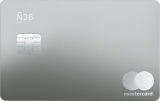What is a digital wallet & how does it work?

Digital wallets, defined
How does a digital wallet work?
- A digital wallet uses software to link your payment details from your connected bank account to the vendor that the transaction is being made with.
- Different apps allow different types of access—open wallets (accepted at most retailers) enable online purchases, contactless in-store payments, and cashback—and may even allow withdrawals at select ATMs.
- Semi-closed and closed wallets allow certain transactions with a set group of retailers, or only with the retailer that issued the wallet.

The best digital wallets
There are plenty of digital wallet apps to choose from. The decision really comes down to your needs, location, and what kind of smartphone you’re using. Apple Pay, for example, is the go-to for iPhone users, while Google Pay is for anyone with an Android. Others prefer PayPal, which is accepted internationally. There’s also Cash App and Venmo, the latter of which requires a valid US phone number. Here’s a breakdown of the best digital wallets out there.Apple Pay
Payments with Apple Pay are verified using Touch or Face ID, so you can have maximum security with minimal effort.
Google Pay
Google Pay uses NFC technology so you can pay with a fingerprint or a password, and your card information is always encrypted.
Samsung Pay
Samsung users can also set up Samsung Pay, another widely accepted electronic payment system equipped with MST and NFC technology.
PayPal
Add your virtual N26 Mastercard to PayPal so you can check out with a single tap anywhere PayPal is accepted.
Digital wallets—the benefits

Are digital wallets safe?
Digital wallets use advanced encryption to ensure that your payment information never leaves your smartphone. And becauses digital wallets sit within your passcode-protected device, with payments often only possible via fingerprint, they’re quite secure. Many wallets also have additional security protocols, like two-factor authentication one-time PINs, that can be used if needed. Still, it’s a good idea to stay vigilant—always keep your passwords to yourself, monitor your accounts for suspicious activity, and make sure that you’re able to disable your device if it gets lost or stolen.How to use a digital wallet
Once you’ve got your digital wallet set up, you can use it to make online or contactless payments, store tickets and coupons, and much much more. Apple Wallet and Google Wallet are two of the most popular ones, but there are lots of digital wallets out there to choose from.Crypto wallets

Downloading your digital wallet
Getting a digital wallet is straightforward and usually just takes a few minutes. Just download your chosen digital wallet app, enter the details from your eligible debit or credit card, and start spending straight away. When you open an N26 account, you’ll instantly receive your own virtual N26 Mastercard right on your smartphone. Link it with Apple Pay or Google Pay and within seconds you can make payments from your very own mobile wallet.Find a plan for you
N26 Standard
The free* online bank account

€ 0,00/month
A virtual debit card
Free payments worldwide
Deposit protection
N26 Go
The debit card for everyday and travel





€ 9,90/month
Up to 5 free withdrawals in the Eurozone
Flight and luggage delay cover
Medical emergency cover
Winter activities insurance
Pandemic coverage
N26 Metal
The premium account with a metal card



€ 16,90/month
An 18-gram metal card
Up to 8 free withdrawals in the Eurozone
Purchase protection
Phone insurance
Dedicated N26 Metal line

